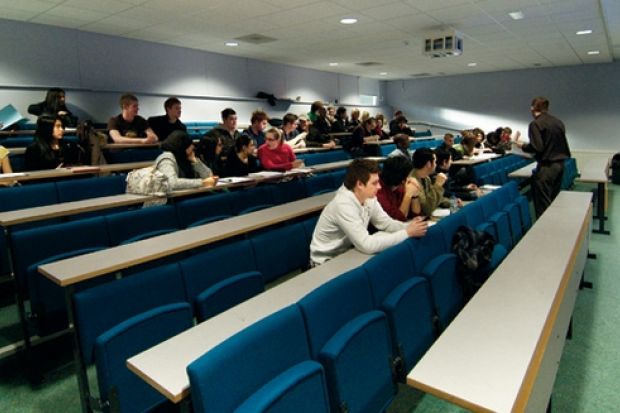The government is considering changing its method of allocating thousands of cut-price student places following concerns over the "polarising" effect of the policy, as initial figures suggest that some universities will lose up to 14 per cent of their numbers next year.
Under its core-and-margin plans, which are designed to drive down overall tuition fees, 20,000 places are being redistributed to universities and further education colleges with average charges - after fee waivers - of £7,500 or less.
The policy has been criticised for creating a "squeezed middle" of universities above the threshold but not in the "uncapped" market for students with AA or better at A level.
Now it has emerged that although the government is keen to continue increasing the margin of contestable places, it may consider a price threshold that applies on a course-by-course basis rather than the average across a whole institution.
Such a move would allow universities with an average fee above £7,500 - possibly due to offering more bursaries than fee waivers or having more subjects with high delivery costs - to compete to win back places for their lower-priced courses.
The development comes as the first figures on how student numbers have been allocated for 2012-13 - including awards of margin places - start to filter through.
According to figures seen by Times Higher Education, some universities with average fees above £7,500 - and therefore unable to compete in the margin - are seeing a drop in their undergraduate allocation of between 11 and 14 per cent. This is far higher than the 8 per cent they originally expected.
The discrepancy is believed to be partly due to the decision by the government to cut an extra 5,000 places from the funding council's maximum number cap due to over-recruitment by the sector this year, and anticipated growth in AAB students.
This is in addition to 10,000 places already being removed from the system in 2012-13.
Libby Hackett, director of the University Alliance group of business-engaged institutions, said the unexpected hit was bad for student choice as many of the institutions affected were performing strongly on applications.
"You are looking at universities that have held up very strong demand per place or have increased applications and at the same time they are seeing a significant drop in places of up to 14 per cent in just one year," she said.
"Overall, the places being taken out of the system in 2012-13 or transferred to further education means there will be about 25,000 fewer young people able to go to university compared with this year. With growing demand for graduates in our economy and massive youth unemployment, this seems nonsensical."
The Alliance wrote to government ministers late last year suggesting "fairer" ways to apply the margin to avoid a "false divide" in the sector, but a decision on the future of the policy, as well as the AAB plan, has been delayed.
"We urgently need a decision on core and margin for 2013-14 that reflects student demand and to enable universities and other higher education providers to undertake essential planning decisions as well-run, efficient businesses," Ms Hackett added.
Her comments came as figures also emerged about how student places will be distributed from the margin next year. Subject to an appeals process, 143 further education colleges will get almost 9,600 places and 35 higher education institutions will get 9,300.
